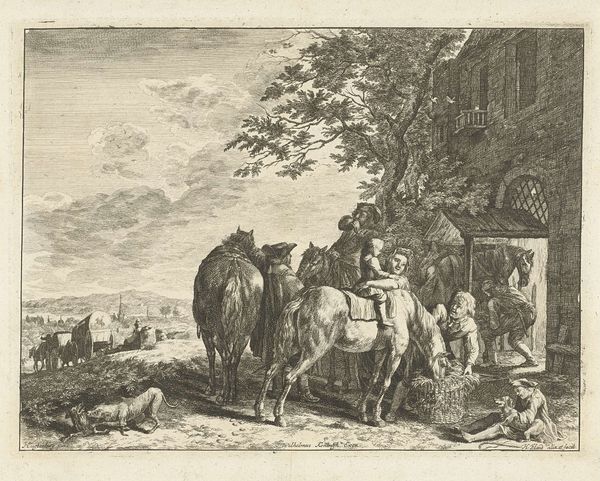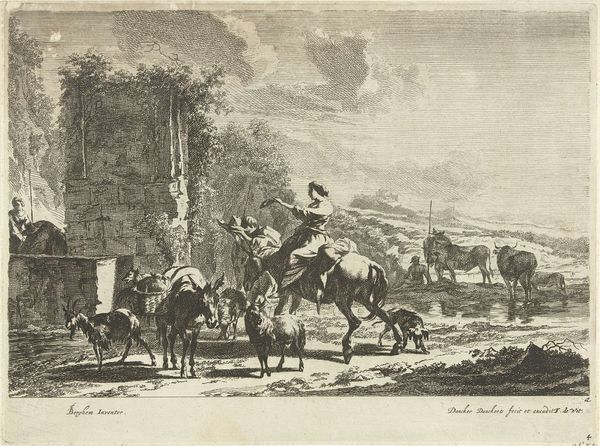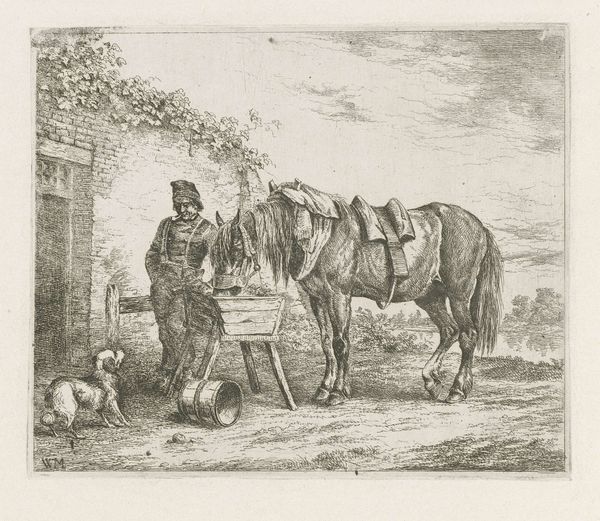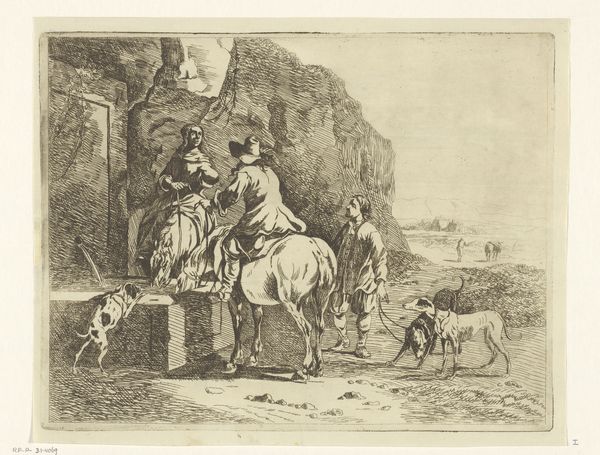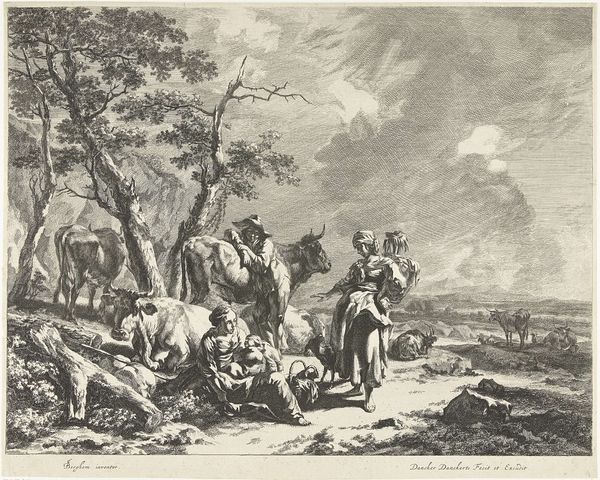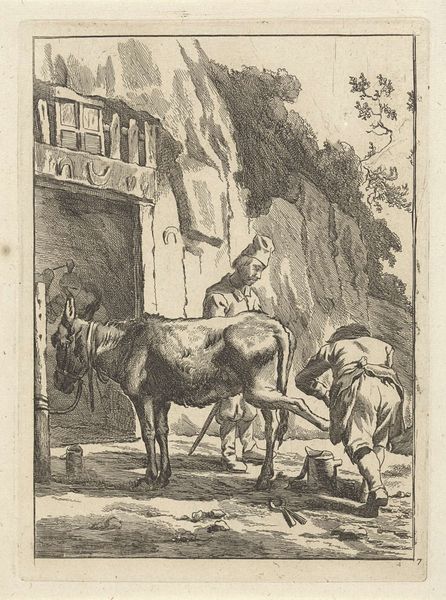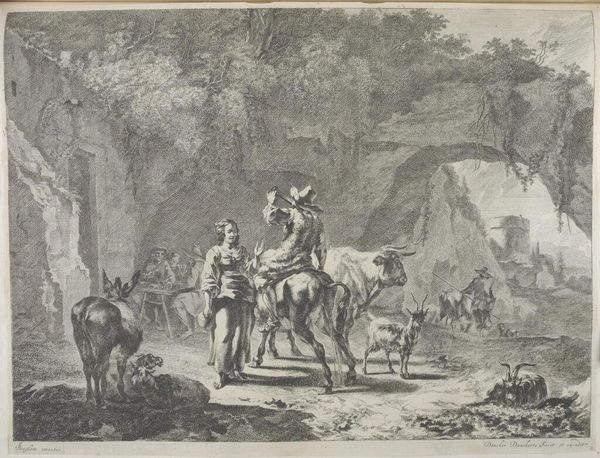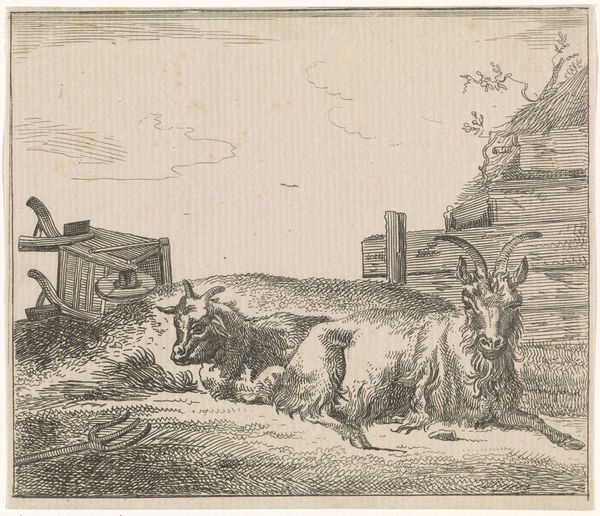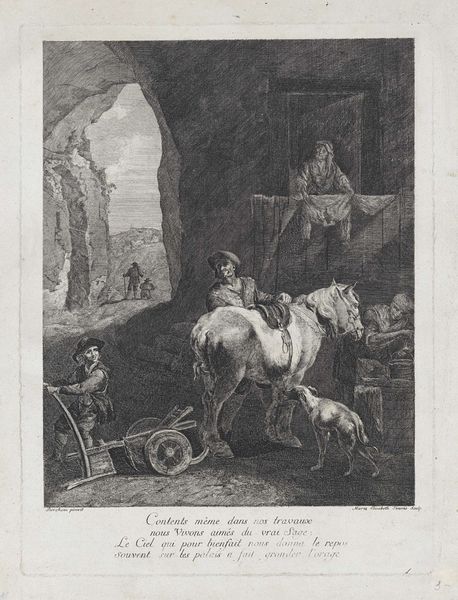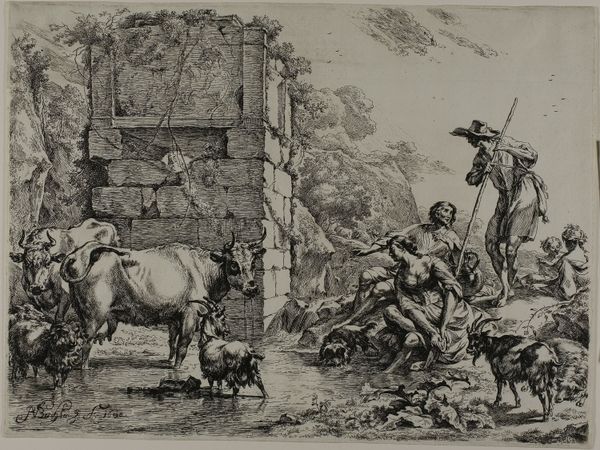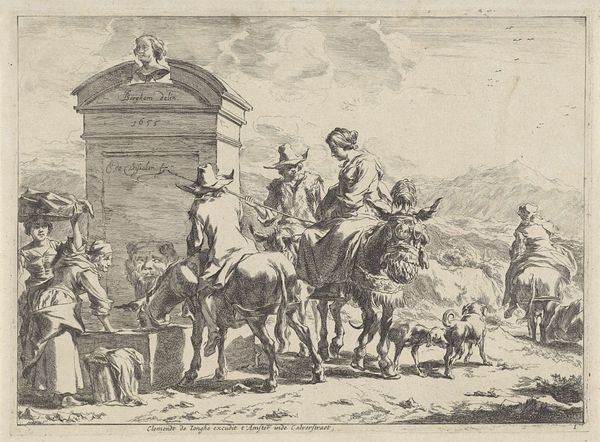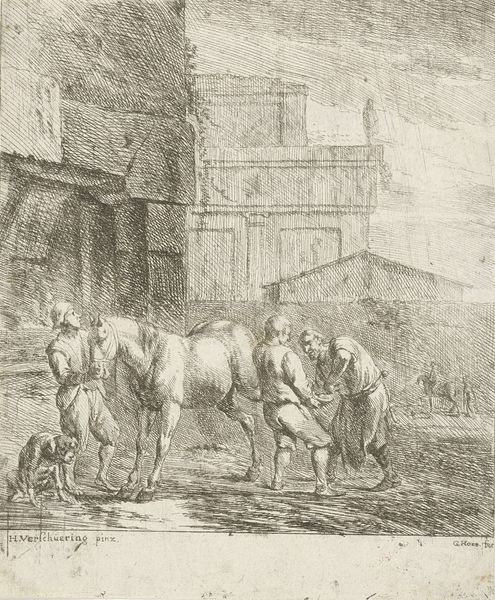
drawing, print, etching, engraving
#
drawing
# print
#
etching
#
landscape
#
genre-painting
#
engraving
#
realism
Dimensions: height 210 mm, width 272 mm
Copyright: Rijks Museum: Open Domain
Curator: Welcome. Before us is "Ruiters bij drinkplaats," or "Riders at a Watering Place," an engraving and etching attributed to Anthonie van den Bos, dating sometime between 1778 and 1838. Editor: Well, isn’t this just brimming with nonchalant elegance? The riders and their horses, the casually posed dogs…it’s all very "day in the life of leisure," but there is this palpable tension too. Like something interesting just happened, or is about to. Curator: Interesting that you sense tension. This genre scene taps into the societal norms of its time, idealizing rural life but also reflecting class distinctions through activities like horseback riding, often a symbol of status and privilege. The dogs, too, mark social positioning. Editor: Yes, "privilege" absolutely sings out. Though I'm also struck by how enclosed the composition feels. The dark craggy hill on one side and what seems to be a building fragment on the other, they almost squeeze the figures, which for me, sets a dramatic and exciting stage! Almost filmic, even. Curator: Precisely. The artist uses the landscape not just as a backdrop but to frame and emphasize the human activity. Consider how printmaking, as a medium, allowed such scenes to circulate widely, disseminating ideas about landscape and social life. We also can’t forget the impact the Dutch Golden age had on landscape and genre paintings at this period. Editor: Good point, good point... and do you think that compressed perspective might signal something beyond aesthetics? Like a sense of limitation or constraint for these otherwise "free" riders? Maybe the building fragment and that dark, monolithic mountain face symbolizes barriers for progress or exploration? I am really intrigued. Curator: That interpretation is certainly valid, acknowledging art's power to provoke multiple readings shaped by different cultural contexts. These prints are also testaments to the era's fascination with representing daily life while hinting at underlying social narratives. Editor: Agreed. The artist prompts us to contemplate our own lives of freedom but simultaneously to acknowledge any real and present limits. This image leaves me with something to consider further - perhaps over another cup of coffee. Thank you for offering some enriching historical context for my meandering thoughts! Curator: The pleasure was all mine. These historical lenses help contextualize our emotional reactions to this captivating image, indeed something worth pondering even after our visit to this gallery concludes.
Comments
No comments
Be the first to comment and join the conversation on the ultimate creative platform.
